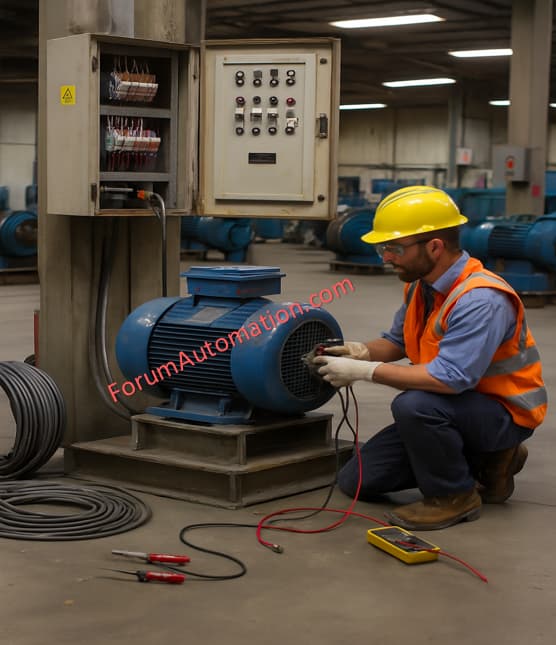A motor suddenly halting is a common industrial problem but without competent diagnosis, it can do significant harm.
Here’s a step-by-step expert guide that all technicians should follow:
1). Check Power Supply and Line
2). Check for Thermal Overload
3). Check for Capacitor/Starter issues
4). Inspect Motor Condition
5). Check for Load and Mechanical Problems
6). Safety and Maintenance
7). Technician’s Step-by-Step Action Plan
1). Check Power Supply and Line
Ensure that the motor’s power supply is present & stable.
Check fuses, circuit breakers and power sources for issues.
Test for voltage fluctuations or phase loss.
Utilize a multimeter to precisely measure voltage levels.
2). Check for Thermal Overload
Continuous overloading causes the motor to overheat.
Most motors include a thermal overload relay that trips to protect the windings.
Signs of overload include extreme heat, smoke, or odd noise.
After cooling the motor, reset any overload protection.
3). Check for Capacitor/Starter issues
In single-phase motors, a malfunctioning start or run capacitor can cause a sudden stop.
Use a multimeter to measure the capacitor’s voltage and capacitance.
Replace if it falls below the rated capacity or exhibits bulging or leakage.
4). Inspect Motor Condition
Check the stator & rotor windings for open and short circuits.
To determine winding insulation resistance utilize a megger (insulation tester).
Inspect the brushes & commutator of DC motors for signs of wear or dirt accumulation.
5). Check for Load and Mechanical Problems
Excessive mechanical load can cause the motor to stall.
Inspect the coupler, gearbox, shaft & bearings for jamming (or) misalignment.
Reduce the load and physically rotate the shaft to ensure that it moves freely.
6). Safety and Maintenance
Always turn the power off before checking the motor.
Clean up dust and dirt on a regular basis.
Make sure all electrical connections are tight & the terminals are corrosion-free.
Lubricate bearings according to the manufacturer’s timetable.
7). Technician’s Step-by-Step Action Plan
- Check the power supply & voltage.
- Inspect the fuses and circuit breakers.
- Verify the thermal overload relay.
- Test the capacitor or starter.
- Examine the windings, stator, and rotor.
- Identify mechanical or load difficulties.
- Schedule regular maintenance & safety assessments.
You can also follow us on AutomationForum.co, Facebook and Linkedin to receive daily Instrumentation updates.
You can also follow us on ForumElectrical.com , Facebook and Linkedin to receive daily Electrical updates.
